The poisoners: How hitmen, spies, serial killers and suburban murderers used toxic substances to kill
Poison is a silent weapon used by international assassins to suburban killers. Here are some of the most chilling cases, including a twisted Melbourne brat, an alleged act of espionage and a cold-blooded serial killer with a three-figure death toll.
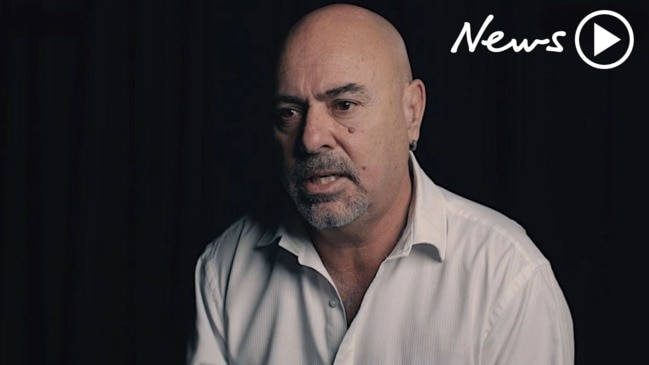
Crime in Focus
Don't miss out on the headlines from Crime in Focus. Followed categories will be added to My News.
Poison: it is the silent weapon used by professional assassins and suburban killers to get the job done, a favoured killing agent over centuries.
Forms of poison were used to kill kings and politicians in the days before Christ.
In the modern age, spies and serial killers have used poisons and drugs to kill enemies and victims.
Self-professed American mass murderer Richard “The Iceman” Kuklinski, for example, admitted to killing many with cyanide.
But no poison has been used more often for murder than arsenic, according to The Encyclopedia of Forensic Medicine.
True Crime Scene has opened the bottle on fatal poisoning crimes — including a couple involving drug-laced food.
Here, we relive 12 cases involving sinister and chilling poisoners.
More True Crime Australia:
HOW BODY IN BIN KILLER DODGED HIS BRUSH WITH LAW
POLICE CONTINUE HUNT FOR YOUNGKIN’S KILLER
The Iceman bragged he’d killed 100
Richard Kuklinski was a prolific hitman who earned the nickname “The Iceman” because he froze a victim to thwart the efforts of forensic examiners.
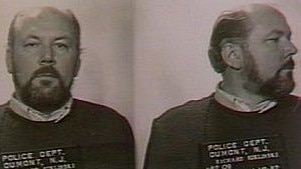
The son of a violent alcoholic father, Kuklinski used cold-hearted methods and was indifferent to killing during his active years between the 1950s and 1980s.
While he was convicted of only a handful of murders and pleaded to one, the hulking American claimed during interviews that he killed more than 100 men.
While he admitted he shot, stabbed, strangled, bashed, burned and dismembered people, he said his favoured method was to use cyanide.
He liked cyanide because it was a fast-acting agent and difficult for pathologists to detect at autopsy.
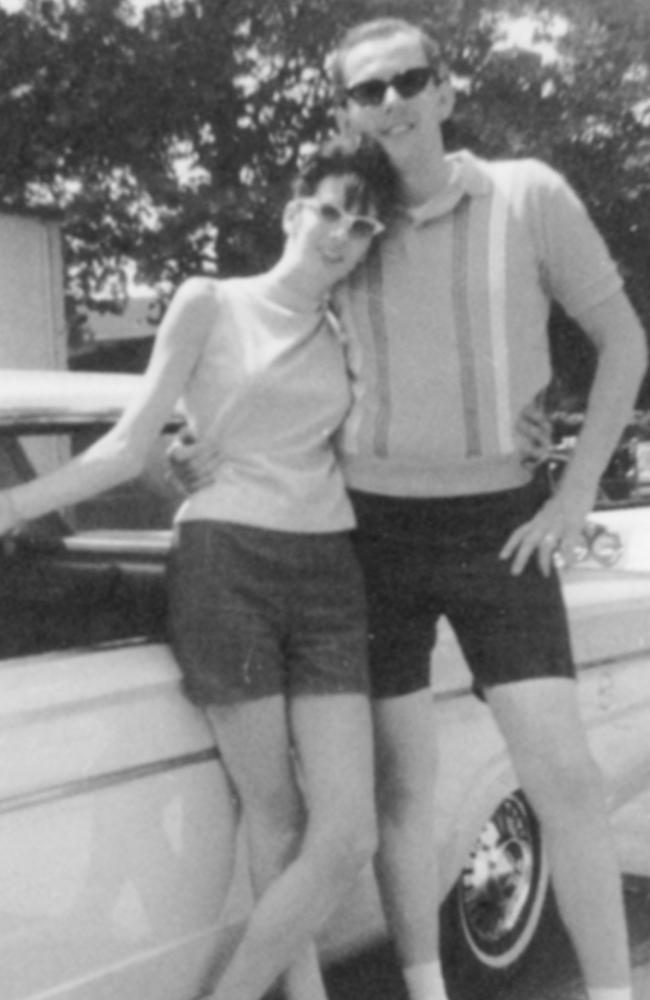
Kuklinski was notorious for using a spray bottle filled with cyanide; a weapon of which undercover cop Dominick Polifrone was acutely aware of while pretending to be a gangster when in Kuklinski’s company.
“No matter where I went with him, I wore this leather jacket with a pocket sewn inside containing a small-calibre weapon,” Mr Polifrone told the New York Post in May 2013.
“I knew that … if he’d pulled out that nasal spray, I’d have to protect myself.”
THE TWISTED ICEMAN’S ONE MURDER RULE
The Society Murders killer
A spoiled and vindictive son of a wealthy Melbourne mum, Matthew Wales, served his millionaire mother and stepfather a drug-laced dinner of soup and risotto — with wines and camomile tea — before he bashed them to death and buried them in a bush grave.
In what became known as “The Society Murders”, Wales killed his mother, Margaret Wales-King, (and, in the process, his stepfather Paul King), because he hated the way she used her money and position to dominate the family.
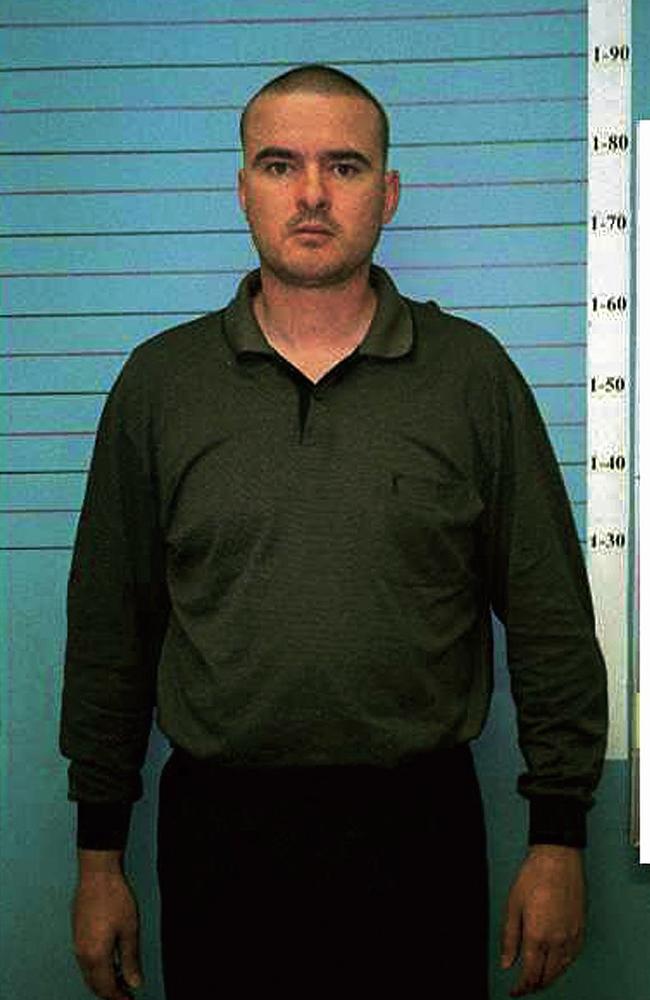
Wales pleaded guilty to bludgeoning his mum and stepdad to death with a plank of wood after drugging their dinner on April 4, 2002.
On the night of the murders, Wales served pre-dinner drinks to his mother and stepfather before preparing the meal at his and wife Maritza’s suburban Glen Iris home.
He laced their vegetable soup with his mother-in-law’s blood pressure tablets and Panadeine Forte to make them drowsy.
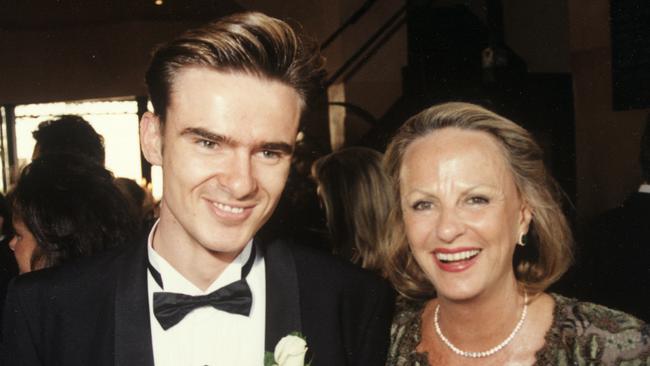
At the end of the night, Wales saw his drug and alcohol-affected guests to the door.
As they walked along the front path, he took a length of wood he had hidden and bashed his mother “with a great amount of force’’.
He dragged the bodies to a garden bed behind the front fence and later covered them with their son’s deflated wading pool.
Wales later buried the bodies off a bush track near Marysville.
He was jailed for 30 years with a 24-year minimum.
WHAT DROVE MATTHEW TO KILL HIS MUM
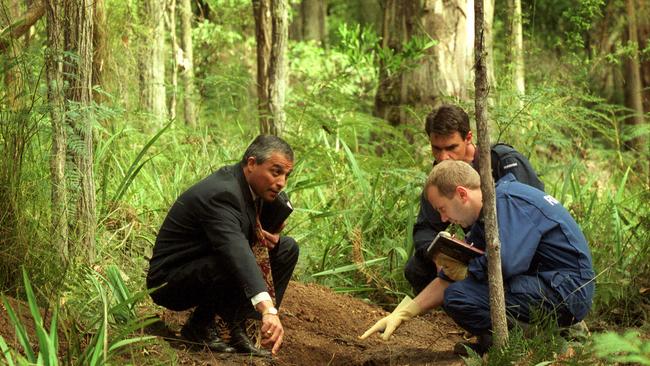
The Black Widow
Known as “The Black Widow”, Vasiliki “Vicky” Efandis was a separated mother who claimed a disability pension and worked as a house cleaner.
It was this occupation that enabled her, in 2002, to creep into the life of Melbourne man George Marcetta, a divorced father who ran a very successful painting business.
Through fake affection, Efandis stole the lonely man’s heart and the two began a relationship.
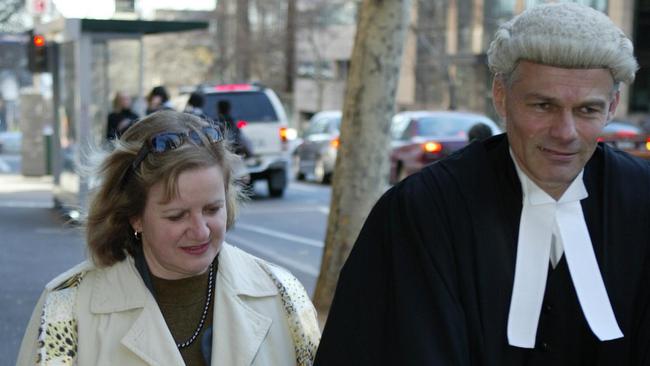
After drugging Mr Marcetta, who ended up in his bed, Efandis then splashed up to 28 litres of kerosene around the home and lit small newspaper fires in nearly every room.
She then left Mr Marcetta to die in his burning home.
Mr Marcetta’s charred body was found in the burnt-out bedroom.
Toxicology tests revealed he’d been drugged.
A jury found Efandis guilty of murder and she was sentenced to 24 years’ jail with a 20-year minimum term.
THE EVIL, MERCILESS GREED OF THE BLACK WIDOW
Russians blamed for radioactive brew after defecting spy struck down
Russian spy Alexander Litvinenko defected to Britain in 2000 and, in November 2006, died after drinking tea laced with polonium at a posh London hotel.
Friends believe he was poisoned with the nuclear substance by Russian security services because of his criticism of President Vladimir Putin’s regime.
The ex-colonel of the FSB secret service — formerly the KGB — fell ill after meeting an Italian contact at a sushi bar in central London.
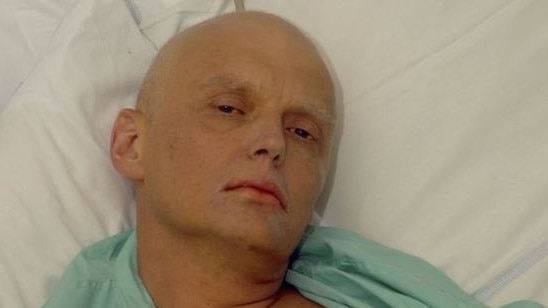
Doctors could not treat Litvinenko’s terminal condition, and he faded away in hospital and died an agonising death.
The popular theory was that Litvinenko was targeted because he opposed the Russian regime headed by Vladimir Putin.
Just hours before he died, Litvinenko uttered: “The bastards got me … (but) they won’t get everybody.”
Moscow strongly denied poisoning the Russian exile, suggesting he was an insignificant individual.
A spokesman told British media: “Litvinenko is not the kind of person for whose
sake we would spoil bilateral relations.”
But, according to reports, British spy masters were convinced the killer poisoner sneaked into Britain for the job and returned safely to Moscow.
Russia has refused to extradite the prime suspect to the UK for questioning.
EX-RUSSIAN SPY’S SHOCKING PUTIN ALLEGATION BEFORE DEATH
Toxic umbrella straight out of a spy movie
The murder of Bulgarian dissident Georgi Markov — poisoned with a toxic umbrella tip — has been labelled one of the Cold War’s most enduring mysteries and a true James Bond-style killing.
It was September 1978 when Markov, a communist defector and author who worked as a journalist for the BBC in London, raised the ire of Bulgarian government officials by using his position to run a campaign against them.
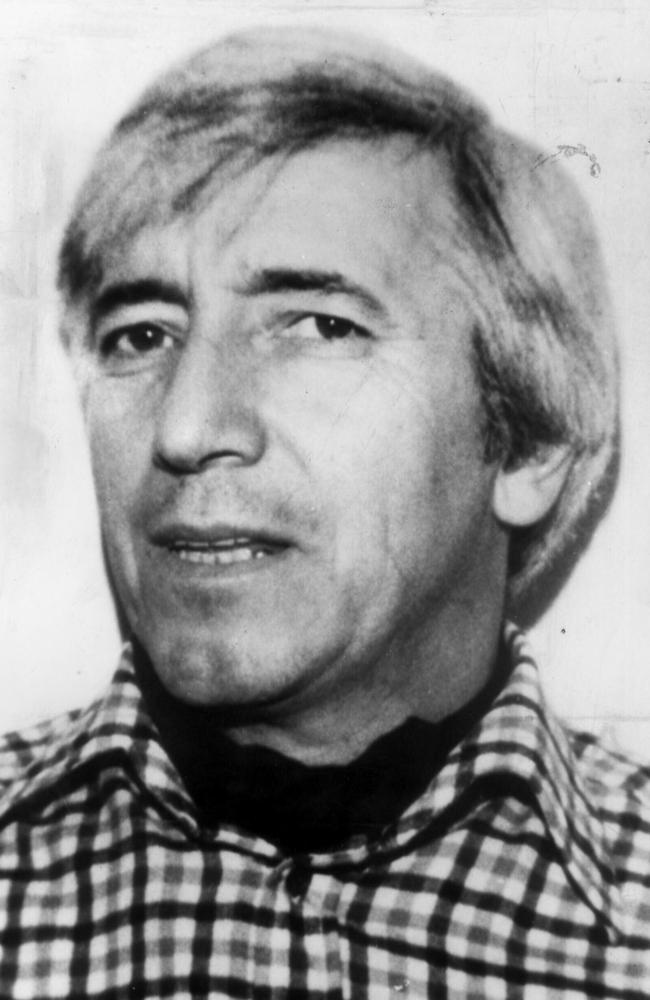
Markov was standing at a bus stop in London when an unknown man jabbed his right leg with a poison-tipped umbrella.
Markov felt a sting, and turned to see a man behind him picking up an umbrella.
The assassin apologised, hailed a cab and drove away.
Three days later Markov died in hospital; a small pellet of ricin had been injected into his skin.
While no one has ever been charged, British authorities believe Markov was the victim of Bulgarian secret police or recruited KGB agents.
The key suspect has been identified as a Danish criminal, codenamed Agent Piccadilly.
Files have reportedly revealed he was recruited by Bulgaria’s spy service.
Two ex-KGB agents have claimed the Soviets were behind the ingenious assassination.
DEFECTOR’S DEATH STRAIGHT OUT OF A SPY MOVIE
The beauty and her 35 dead lovers
A bit of a mystery woman, the alluring Vera Renczi was said to have been extremely jealous and suspicious — while harbouring a pathological and inherent need for male companionship.
Reportedly born in Bucharest, Romania, in 1903 (but more likely several years earlier) Renczi was a wild teen who coveted many boyfriends before marrying a wealthy man at a young age.
Suspecting him of having an affair, she is believed to have poisoned his wine with arsenic and disposed of the body.
Her second husband also vanished without trace under similar circumstances.
Renczi is alleged to have then embarked on a romantic rampage, having affairs with men who also vanished during the 1920s.
Police became suspicious and, during a search of Renczi’s wine cellar, reportedly discovered more than 30 coffins, each containing a man’s remains.
Renczi, a serial poisoner, was convicted and sentenced to life in jail, where she died.
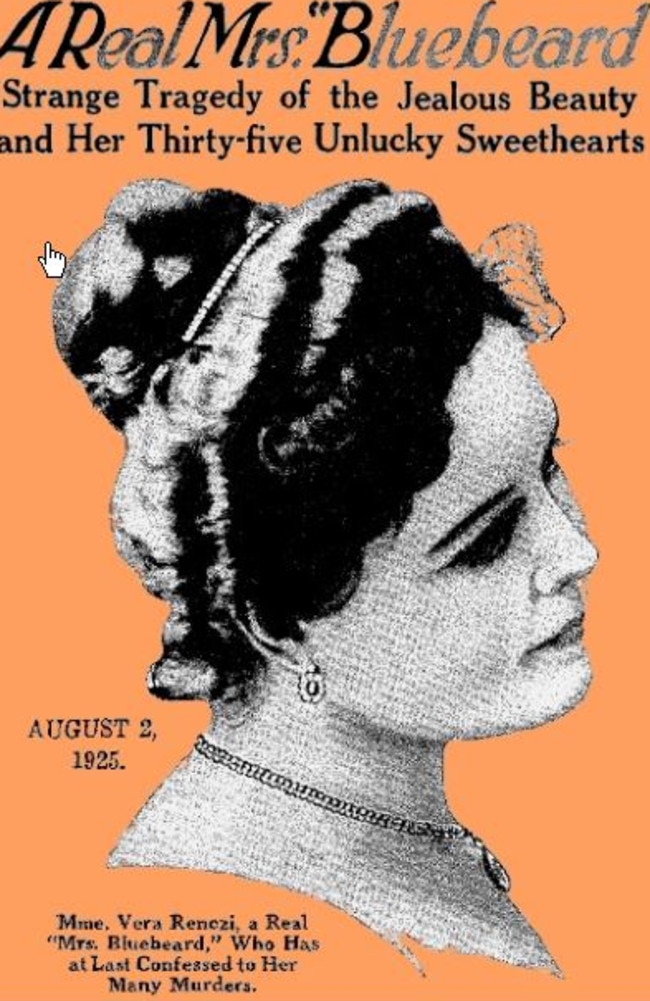
Britain’s female serial killer’s deadly soup
Classed as Britain’s first female serial killer, Mary Ann Cotton used a nasty poison to kill at least 20 people over 12 years in the mid 1800s.
“They all died of the mysterious illness (often diagnosed as gastric fever), which seemed to follow Mary Ann,’’ wrote The Encyclopedia of Forensic Medicine’s author, Jay Robert Nash.
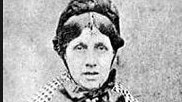
As well as her stepson, she probably murdered her mother, a number of her children and stepchildren, three husbands, a lover and an inconvenient friend.
She murdered by serving her victims tea or soup laced with arsenic.
Her motive was to benefit both financially and socially from the deaths.
The serial murderer was hanged for her crimes.
The Lambeth Poisoner claimed he was ‘Jack the Ripper’
Referred to as the “Lambeth Poisoner”, Thomas Cream was a Scottish-born serial killer who poisoned people around the globe.
A qualified physician and surgeon, he was raised in Canada and studied in Edinburgh and returned to Canada to practise in Ontario.
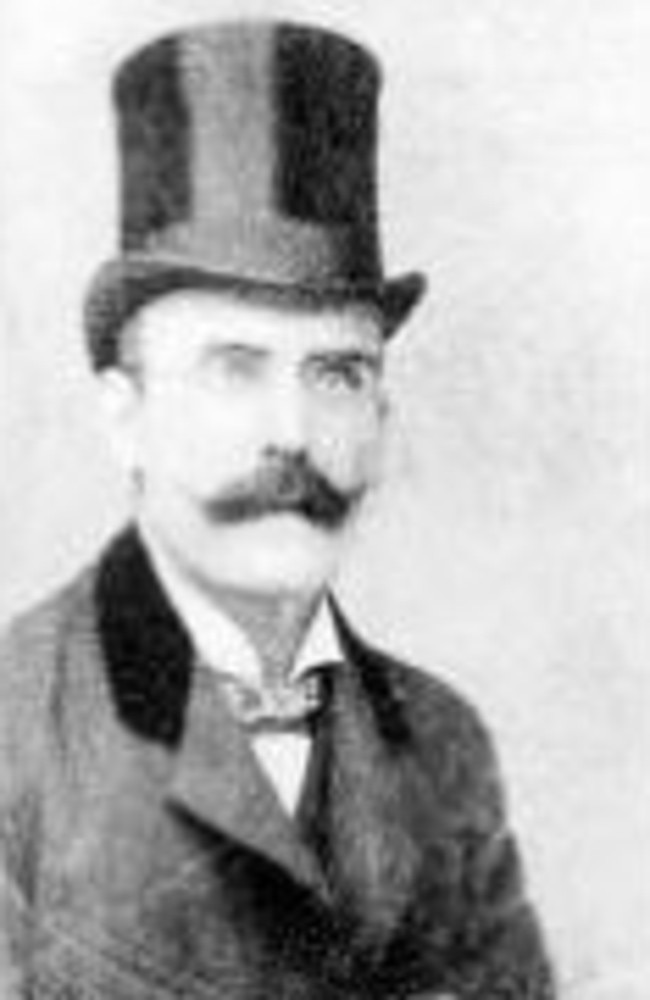
After he was linked to the chloroform murder of an alleged lover, he fled to the United States and worked near Chicago’s red-light district.
He was linked to the deaths of several female patients and blackmail attempts and, after a stint in jail, travelled to England where he again worked in an area known for its prostitutes.
He is suspected of killing four young women by mixing strychnine in their drinks.
Cream was convicted of murder and hanged in London’s Newgate Prison in November 1892.
Just before the noose tightened, he claimed he was the infamous “Jack the Ripper”.
Nursing home killer owned ‘the murder factory’
Working as a nursing home proprietor in the US state of Connecticut, “Sister” Amy Archer-Gilligan revelled in murder.
She poisoned five people: her husband and four nursing home residents.
Over a period of nine years in the early 1900s, 60 residents died in one of Archer-Gilligan’s homes.
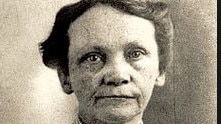
Most, if not all, had paid large sums of money to live at the home.
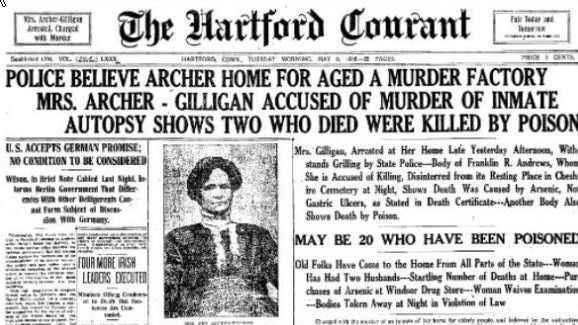
Articles led to a police investigation.
Five bodies were exhumed and it was deemed the victims had actually died from arsenic and strychnine poisoning.
Archer-Gilligan was charged, convicted for one murder and, after appeal, sentenced to life in jail.
She was later transferred to an asylum where she died in April 1962.
The case inspired the play, and consequent film, entitled Arsenic and Old Lace.
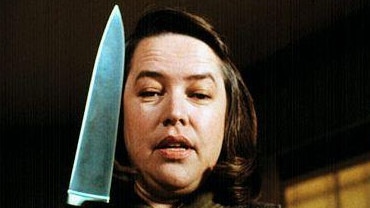
Gambler rolled the dice with old men’s lives
Born in Germany and sent to live in America after a sexual scandal, Anna Marie Hahn is said to have turned to poisoning and robbing elderly men to support a gambling habit.
In the city of Cincinnati, she is believed to have killed her first victim in May 1933.
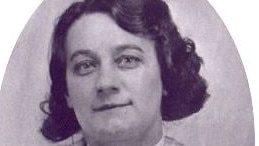
A woman who befriended elderly men and charmed them into the grave with the help of doses of poison, Hahn killed two men in their 70s and profited from their deaths.
Another victim, aged in his late 60s, gave her $15,000 for her care and companionship before his death.
She was convicted after her last victim died in August 1937.
A pathologist found arsenic in his body.
Some of her other suspected victims’ bodies were exhumed, and tests revealed they, too, had been poisoned.
Hahn was sentenced to death and was executed in the electric chair at Ohio Prison in Columbus in December 1938.
The Lonely Hearts Killer kept looking for true love
Born Nancy Hazel in November 1905, Nannie Doss was a romantic at heart who used rat arsenic to kill her victims — including four of her five husbands — between the 1920s and 1954.
Dubbed “Arsenic Annie” or the “Lonely Hearts Killer”, this serial killer murdered her husbands because, as she said: “I was searching for the perfect mate, the real romance of life.”
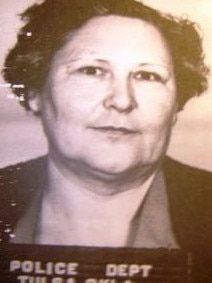
The Oklahoma woman, also dubbed “The Giggling Granny” and “The Jolly Widow” due to her habit of laughing her way through police interviews, is alleged to have killed her mother, two of her children and other relatives.
She moved from husband to husband by scouring personal columns in newspapers.
After the death of her fifth husband, a pathologist found large traces of arsenic in his system.
Doss confessed to the murder in May 1955 and was sentenced to life in jail.
She died of cancer in 1965.
It has been suggested Doss partly inspired author Steven King in the creation of his serial-killer character Annie Wilkes in the novel Misery.
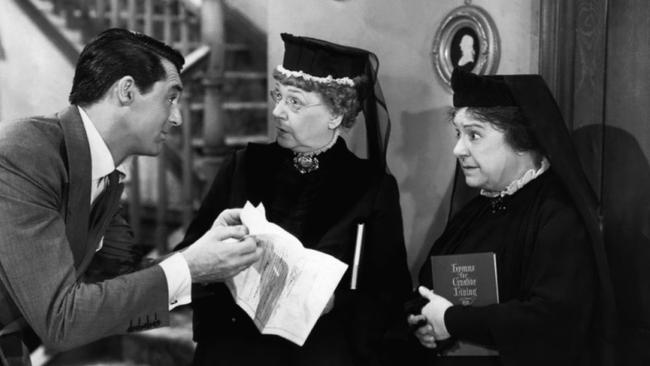
The Teacup Poisoner’s systematic slaying spree
Another English serial killer, Graham Frederick Young had been fascinated with chemicals and poisons and their effects from a young age.
Known as “The Teacup Poisoner”, he poisoned many but only killed three people.
Family members fell ill, before Young’s stepmother died from poisoning.
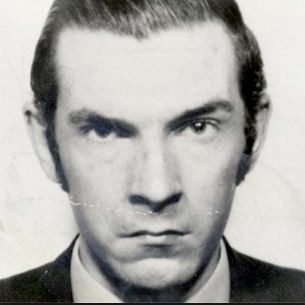
After his arrest, Young confessed to trying to kill his father, sister and a friend.
His stepmother’s death could not be linked to poison as her body was cremated, and Young — under the Mental Health Act — was sent to Broadmoor Hospital as its youngest inmate.
Despite increasing his knowledge about poisons and their effects via text books, he convinced the hospital’s psychiatrist he was “no longer obsessed with poisons, violence and mischief”.
Despite suspicions he killed a fellow inmate with poison, Young was released after nine years and got a job.
Using tea laced with thallium, he systematically poisoned fellow workers.
Two of them died.
Police found a diary at Young’s home.
It contained notes about the dosages he’d administered and decisions on who he would kill and let live.
Young was convicted and sentenced to life in prison.
He died of heart complications in his Parkhurst Prison cell, on the Isle of Wight, in August 1990.
Nurse left a trail of dead children
Genene Jones was a paediatric nurse in the US suspected of killing dozens of young children by injecting them with a range of drugs to poison them.
The alleged crimes occurred at hospitals in San Antonio and Kerriville, in Texas, between 1971 and 1984.
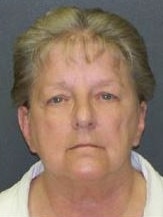
Jones is alleged to have used injections of digoxin, heparin and succinylcholine to poison the children patients, with the aim of saving them and, in turn, receiving praise and glory.
Hospital records were destroyed after her first conviction, hampering efforts to charge her with further crimes.
In 1985, Jones was sentenced to 99 years’ jail for the murder and a subsequent 60 years for the attempted murder.
She is expected to receive early release due to backdated sentencing laws.
Originally published as The poisoners: How hitmen, spies, serial killers and suburban murderers used toxic substances to kill


